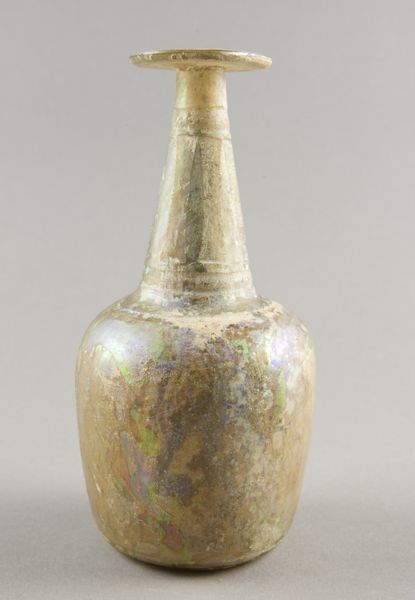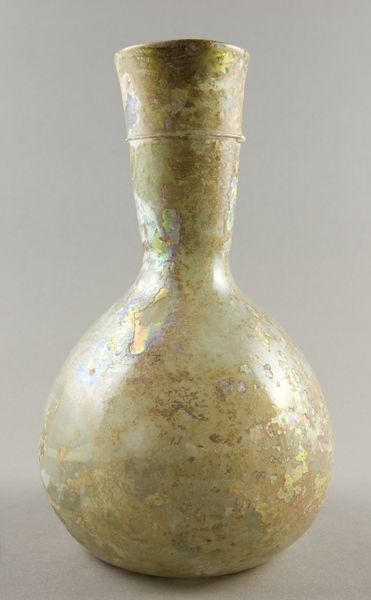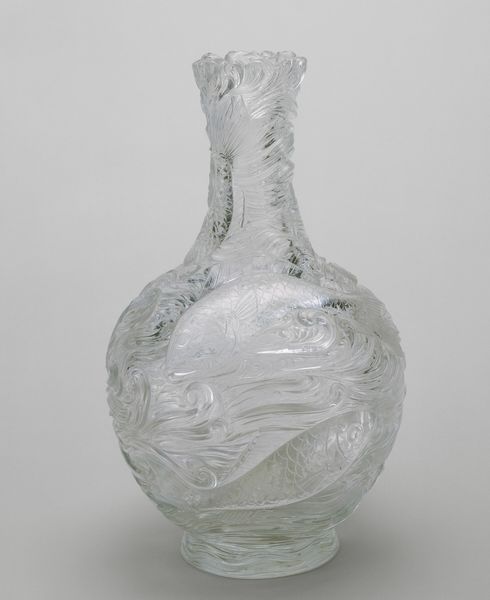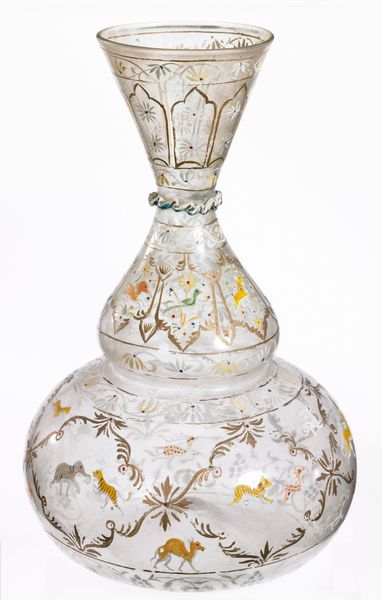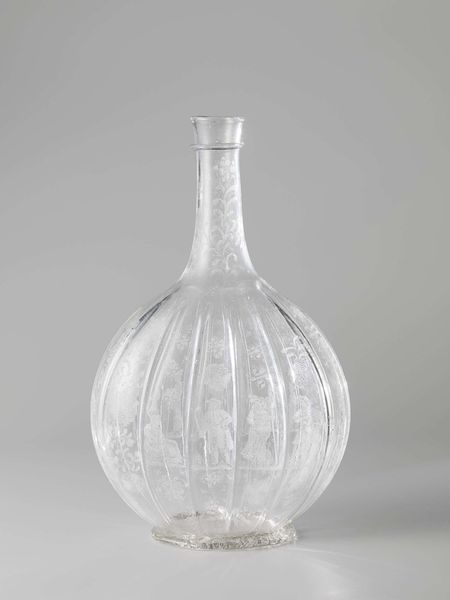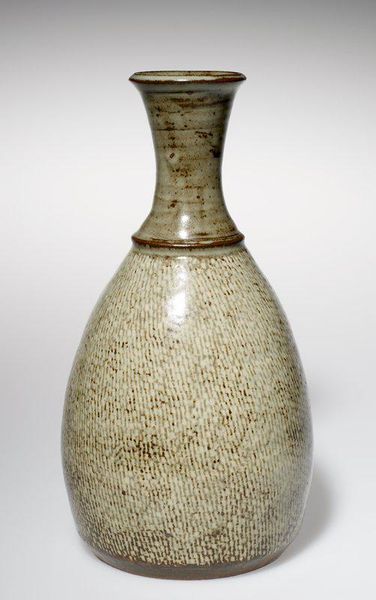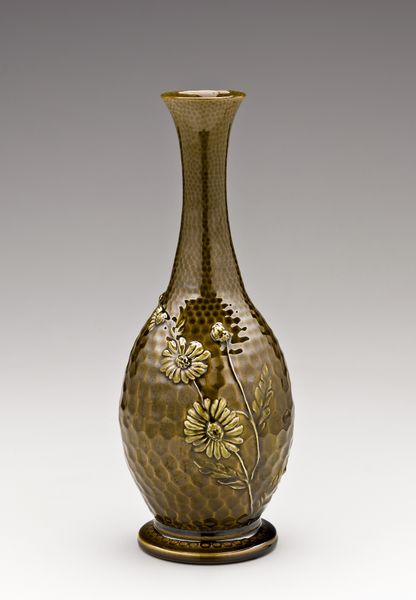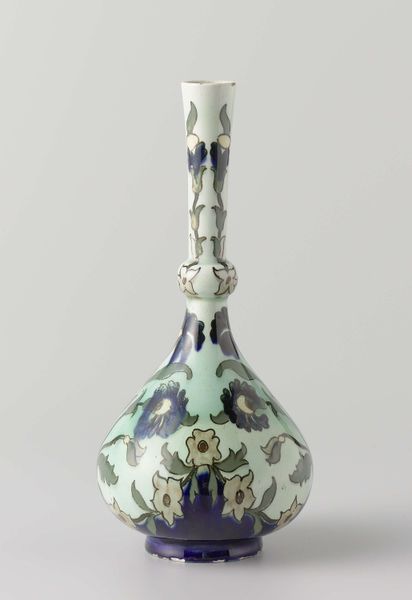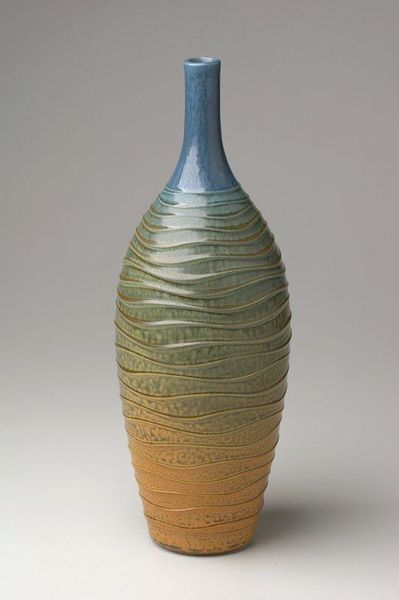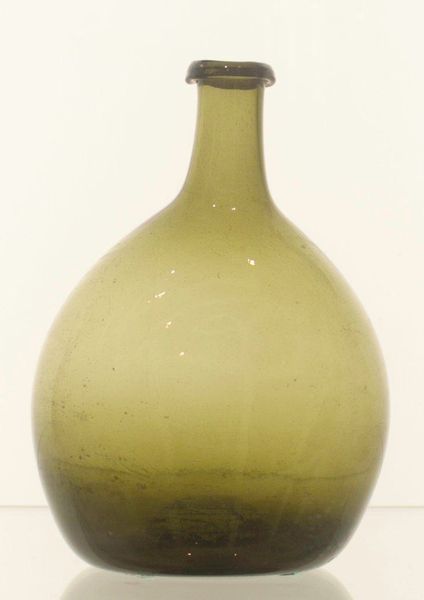
glass
#
glass
#
ancient-mediterranean
#
islamic-art
#
decorative-art
Dimensions: H. 9.5 cm (3 3/4 in.); diam. 5.7 cm (2 1/4 in.)
Copyright: Public Domain
Curator: Here we have an ancient piece, dating back to the 1st century BCE. It’s a glass bottle from the Ancient Levantine region and currently resides at The Art Institute of Chicago. Editor: My first thought? Ethereal. It’s almost like capturing moonlight in a bottle, if you know what I mean? That shimmering iridescence tells a beautiful story of time. Curator: Precisely! The decorative effect on the glass, caused by centuries of interacting with the elements, offers a peek into the alchemic transformation of matter through time. Technically, it is called iridescence or weathering. Editor: "Alchemy of time"—I like how that sounds. Does the bottle's form tell us anything, speaking of technical aspects? It is a rather common bottle design, isn't it? Curator: The morphology does present the iconic ancient bottles that trace an aesthetic continuum within that period of time. Its round body, elongated neck, and slightly flared mouth are evidence of glassblowing methods, indicating technological innovations for the time. Editor: I wonder what stories it could tell, if only it could speak. I envision perfumes, maybe tears or a philtre... What sort of liquid would the people keep safe here? Do we know what these were really for? Curator: While its primary function might be unknown, the symbolism embedded within this vessel links to broader themes circulating Islamic art with an emphasis on protection and spiritual essence. Editor: A little jewel of history, quietly whispering secrets. It makes you appreciate how things evolve and change—us included! Thank you. Curator: Indeed, reflecting upon the bottle’s form and ethereal beauty underscores time's capacity to redefine the way we experience and understand objects as well as our selves. Thank you.
Comments
No comments
Be the first to comment and join the conversation on the ultimate creative platform.
